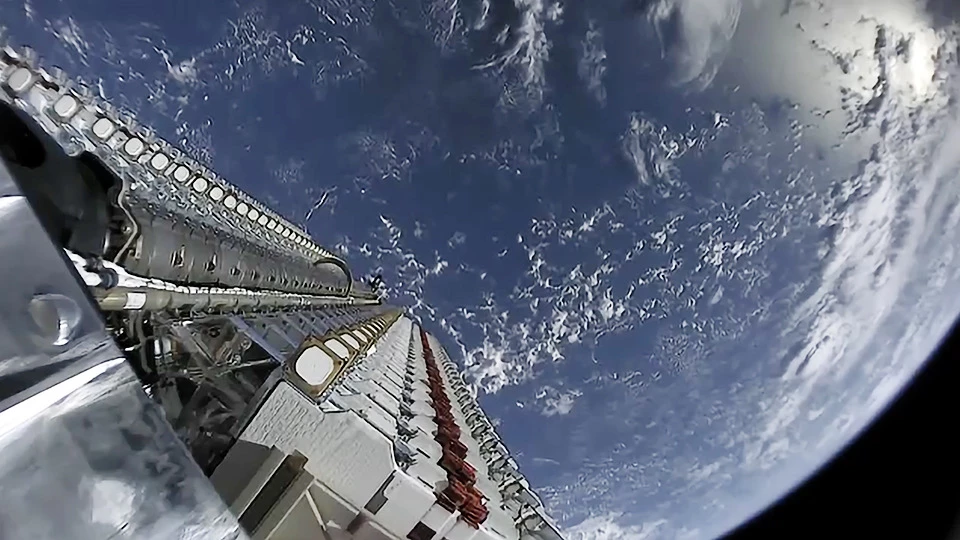SpaceX has lost up to 40 satellites of its Starlink internet constellation due to a geomagnetic storm that is knocking them out of orbit. The satellites were part of a batch of 49 that were launched on February 3 and had not reached their operational altitude.
One of the dramatic innovations of recent space technology is the ability to launch not just one or two satellites at one time, but enormous numbers of them. Thanks to improvements in rockets and reductions in satellite sizes, one launcher can put more satellites into space than the entire world could in one year in the early 1960s.
That means it's now possible to build giant constellations of satellites like Starlink, which numbers over 1,700, quickly with relatively few launches. The downside is that it's a bit like putting all of your eggs in one basket, and if something goes wrong it can affect a large number of satellites.
When SpaceX launched 49 Starlink satellites on February 3 from Launch Complex 39A (LC-39A) at Kennedy Space Center in Florida, it was a technical success. The lift off went without a major hitch and the satellites deployed, going into a low-altitude orbit of about 130 miles (210 km) for systems checks. Any craft that went dead or didn't pass the checks could then be left to safely reenter the Earth's atmosphere via atmospheric drag and burn up safely.

This was all normal, but on February 4 a geomagnetic storm, caused by the solar wind interacting with the Earth's magnetic field, struck. This made the Earth's atmosphere expand, increasing atmospheric drag at the altitude of the newly deployed satellites. This forced SpaceX engineers to put the spacecraft into safe mode and angled their long solar panels edge on to the path of flight to reduce drag.
According to the company, GPS telemetry from the satellites and radar tracking by the US Space Force’s 18th Space Control Squadron and LeoLabs showed that the storm had increased drag by up to 50 percent. This caused the satellites to remain in safe mode, meaning they could not raise their orbits and 40 of the 49 craft have either already reentered the atmosphere or will do so shortly.
SpaceX says that the returning satellites pose no public danger, will not strike any other satellites, and no debris will reach the ground.
Source: SpaceX





